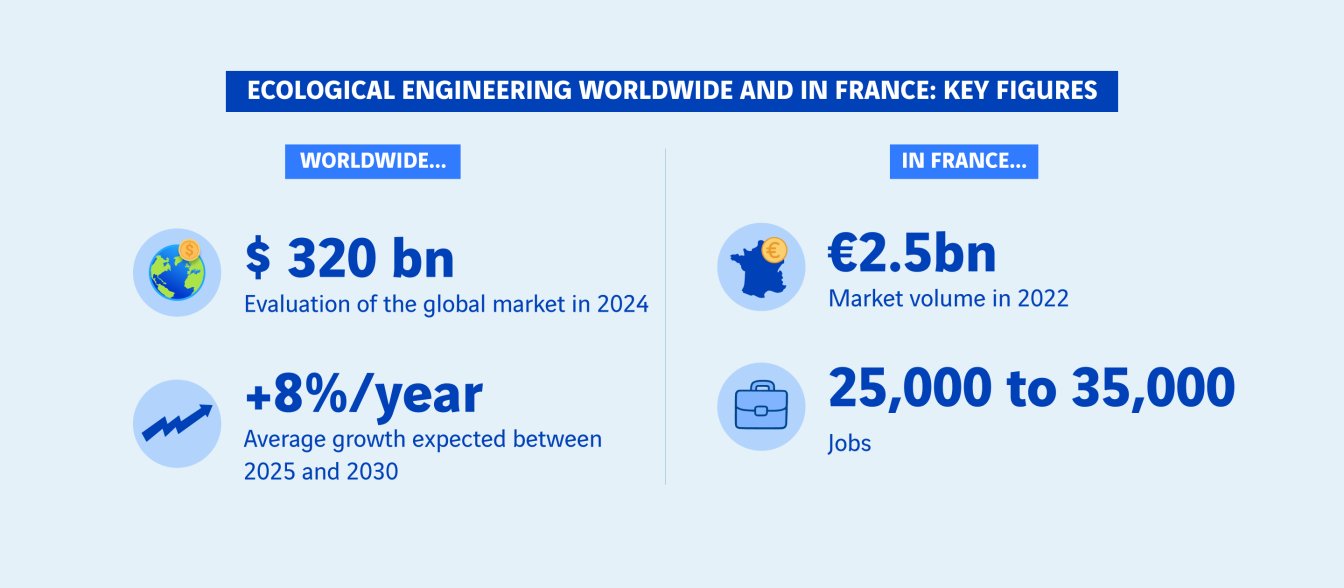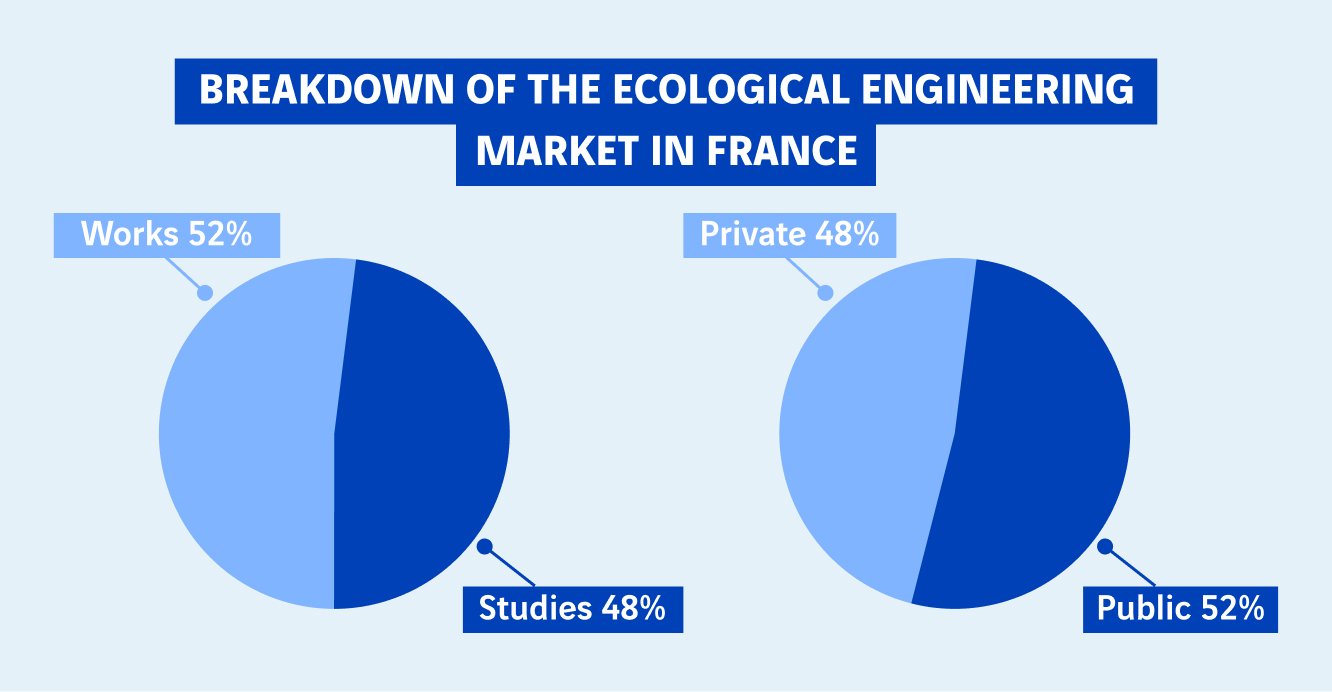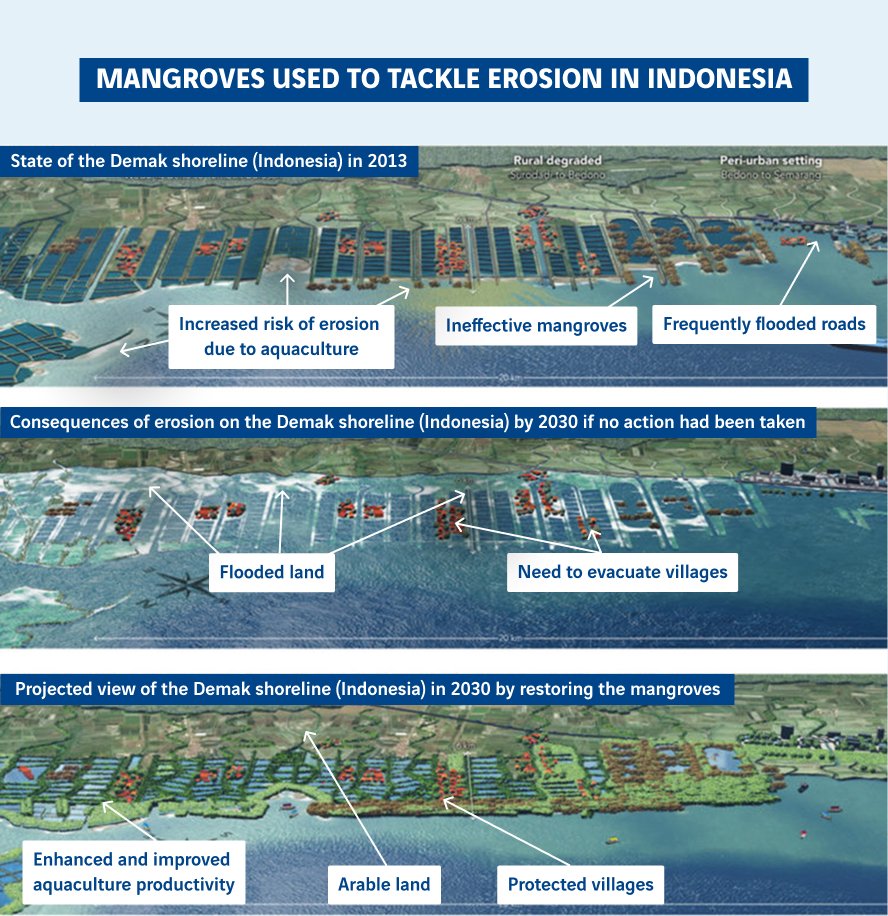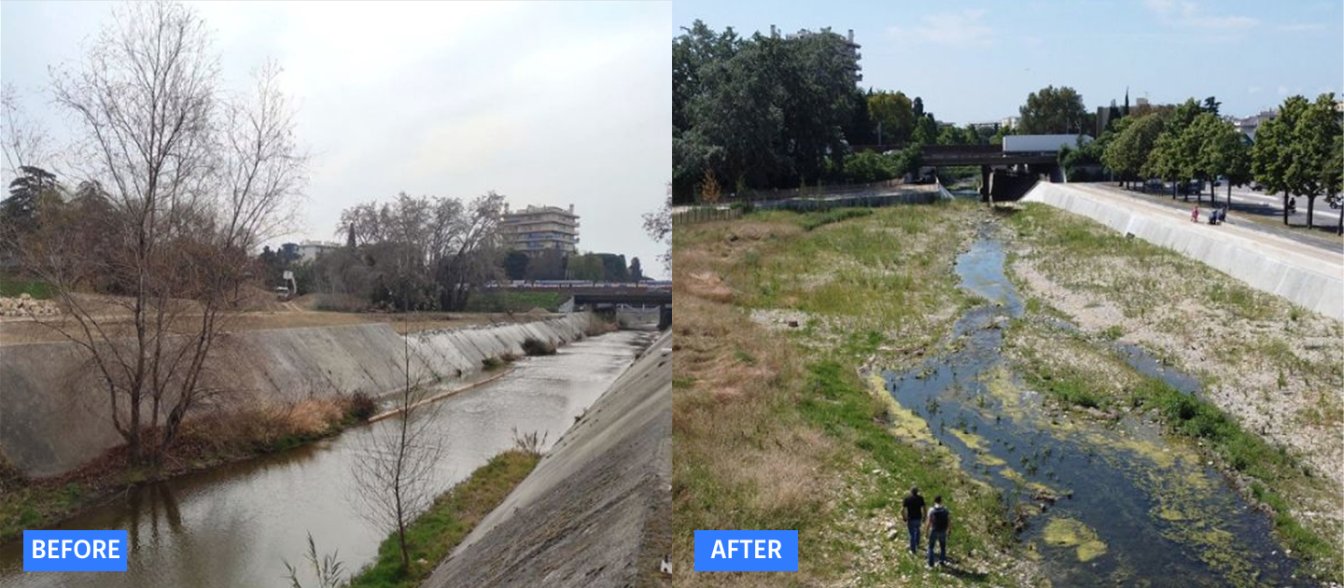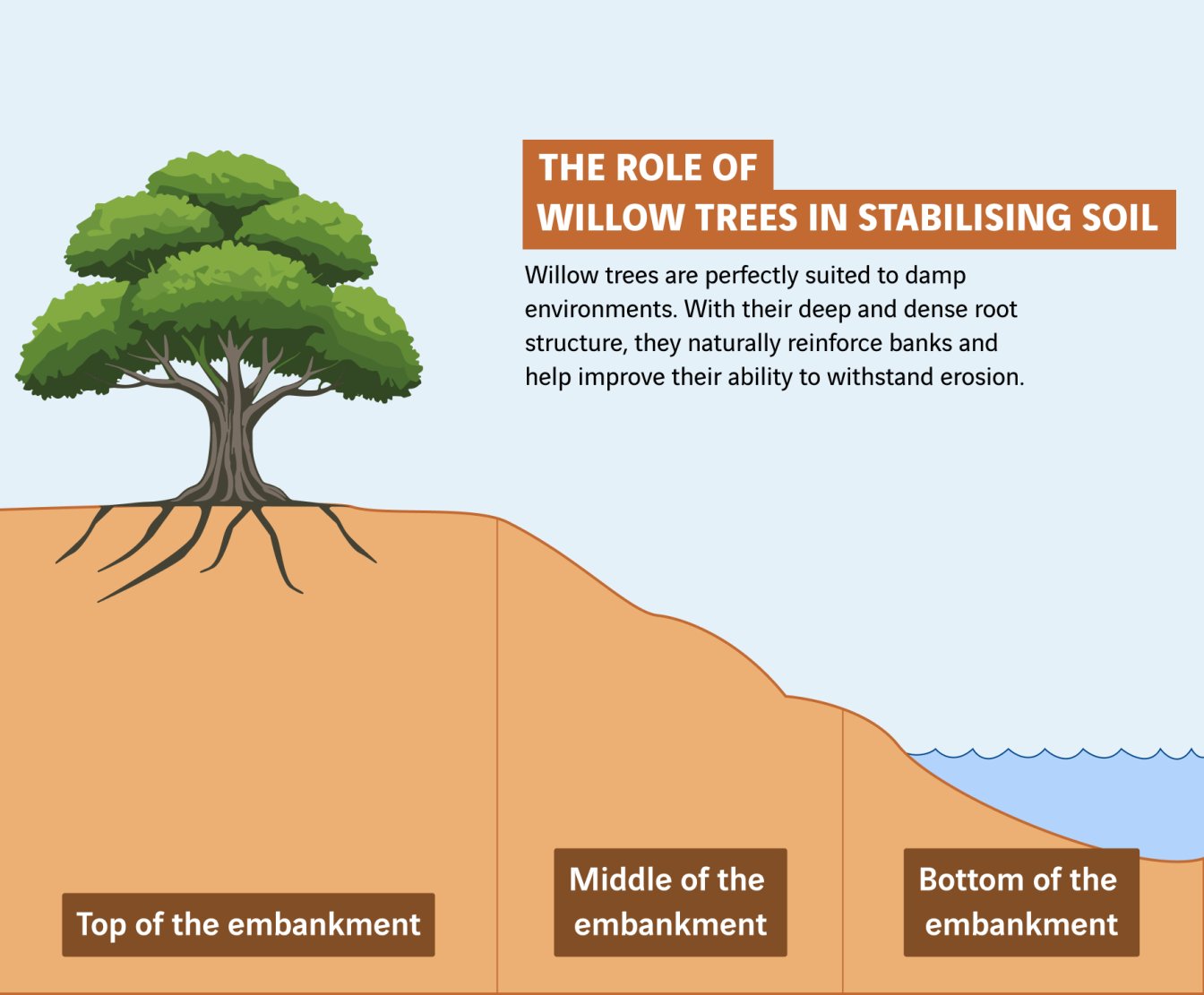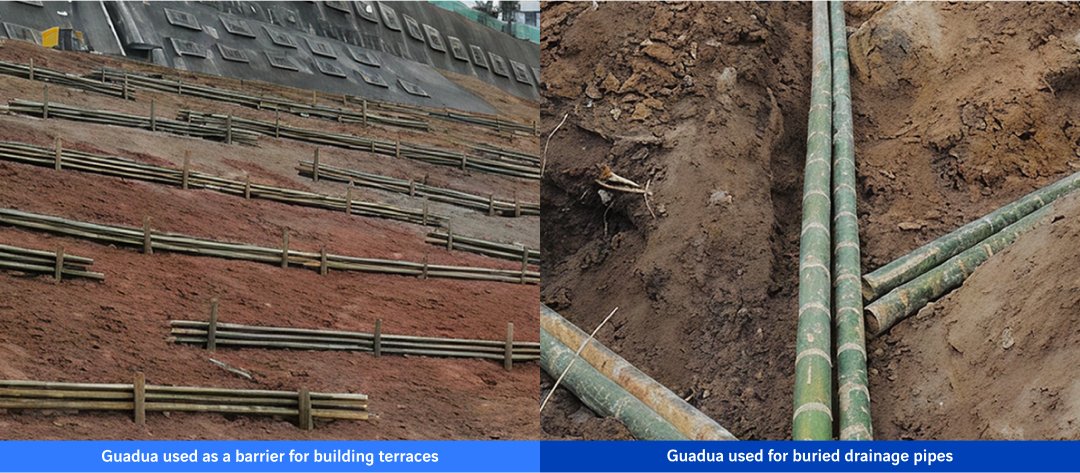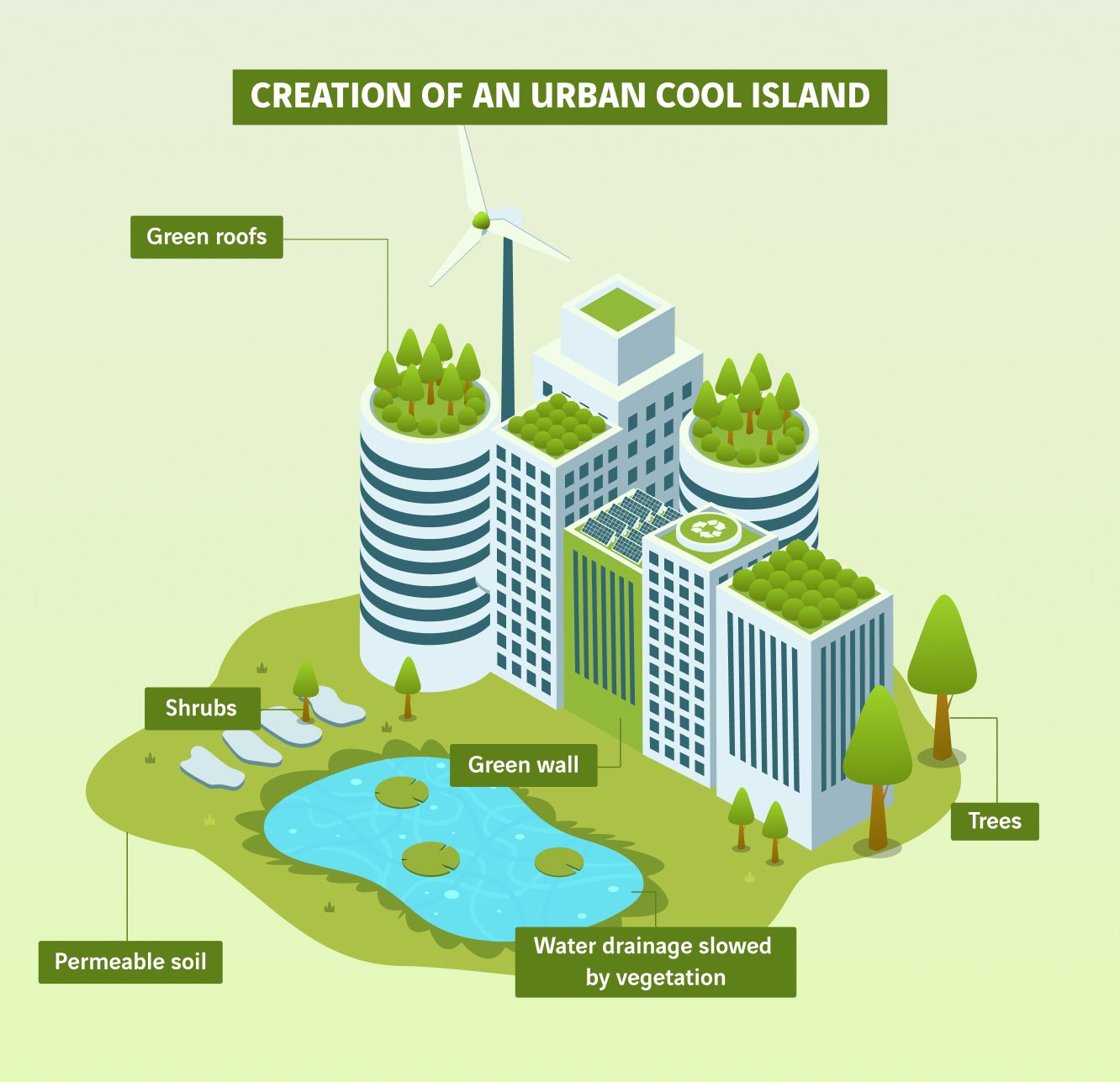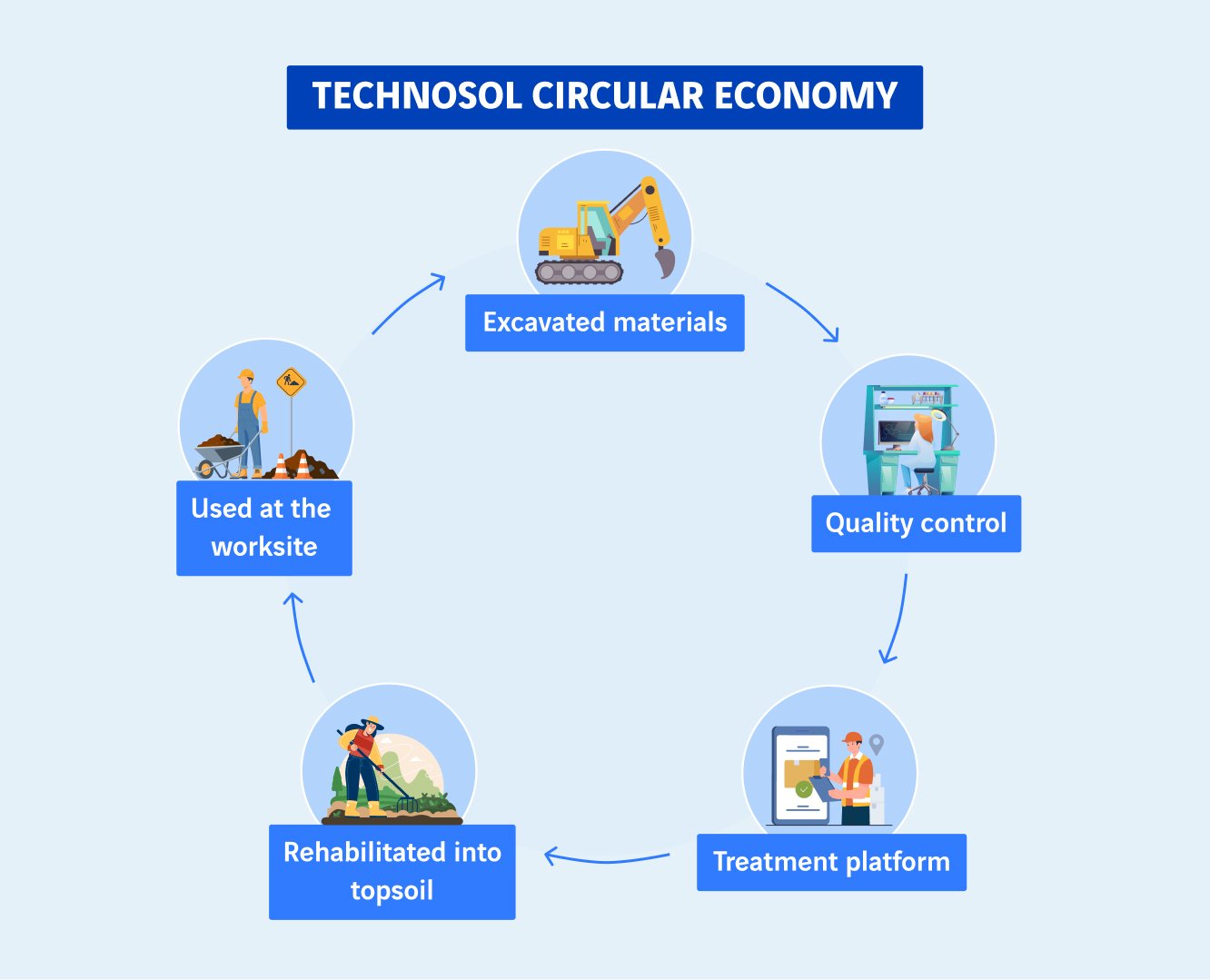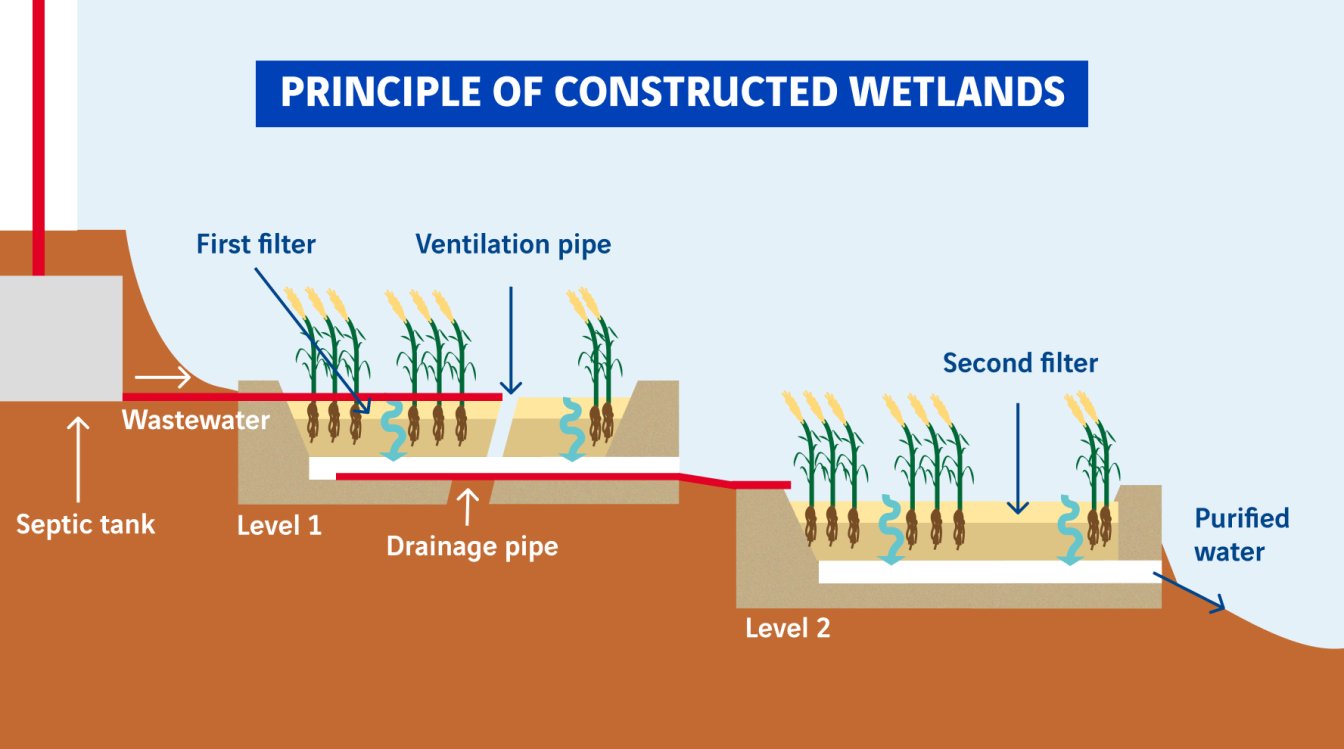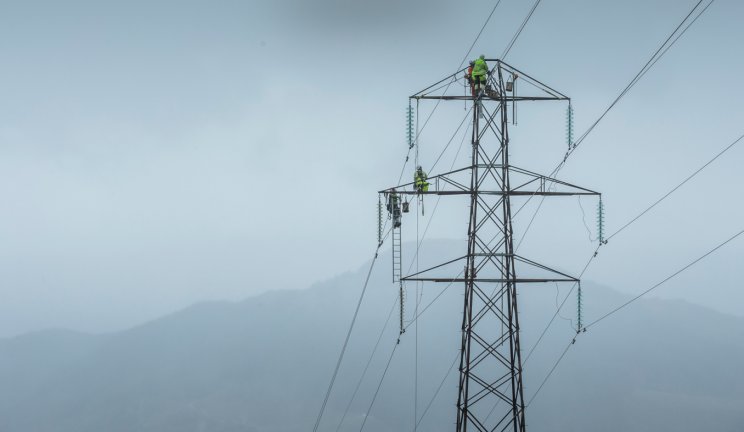
Building with and for nature
Whether creating barrages, stripping away topsoil, cutting down trees or digging channels, humans have spent thousands of years trampling over nature in their unwavering pursuit to build environments where they can thrive and prosper. Reading through the history books paints a revealing picture of mankind’s seemingly never-ending fight against the elements as populations have sought to extend and maintain buildings, fields and roads. Prime examples can even be traced back to the dawn of time with the Pharaonic efforts of the ancient Egyptians to tame the floodwaters of the Nile. Other noteworthy cases include the Dutch initiative of reclaiming marshes to create polders (pioneered as early as the 17th century) and the Andean crop terraces developed by the Incas. But what if we started building with nature, instead of trying to bend it to our will?
A paradigm shift is taking shape as the world becomes increasingly aware of the need to preserve the environment. Professionals are tending to steer away from techniques designed to “control” nature as their interest grows in embracing techniques that can help protect and - better still - build with nature. This approach forms the very backbone of ecological engineering. After first emerging in the 1960s, this concept spread exponentially in the 1990s and now stands as a professional engineering discipline in its own right alongside civil engineering.
Ecological engineering: a fast-growing discipline
Ecological engineering combines engineering and ecology with the aim of designing, building, restoring or managing ecosystems that integrate human activities with their natural environment. The idea is to reinforce the resilience of both natural and human-made environments while taking steps to maintain their biodiversity and preserve all their ecological functions.
Companies and local authorities are increasingly taking action to rein in their impact on the environment as they look to improve their efficiency and align with applicable legislation. This trend has spawned an ever expanding list of projects involving ecological engineering in a wide variety of fields, including waste management, water treatment, decontamination, construction, and sustainable industry practices.
What are the real-life applications for ecological engineering?
Restoring ecosystems
This is undoubtedly the first area that comes to mind when talking about ecological engineering. Ecosystem restoration is the process of repairing spaces that have previously been transformed through human activities or operations, such as quarries and brownfield land. The goal is to eliminate any traces or signs of human occupation. Examples include restoring the area’s access to natural water sources, replanting appropriate species, and removing any constructions or fencing that could prevent wildlife and plant-life from spontaneously returning to the area.
For instance, an initiative has been spearheaded in Indonesia to rehabilitate the mangroves along a 20 km stretch of the coastline in Demak (Java) using civil and ecological engineering methods. This northern coastal region was suffering from severe erosion and the heightened risk of flooding after the mangroves had been converted to support aquaculture activities, groundwater extraction and infrastructure development, meaning that the wetlands were unable to perform their intrinsic ecological role to the full. The BwN Indonesia project won the UN Decade for Restoration Flagship Award3, which helped shine the spotlight on the initiative’s impact.
The teams at Equo Vivo, (VINCI Construction’s ecological engineering brand), alongside such business units as Sethy, Océlian, Terélian and Benedetti Guelpa, are involved in a number of ecological engineering projects. For example, they took part in the ecological restoration project for the River Cagne in Cagnes-sur-Mer, with the goal of cleaning up the riverbed and improving circulation for several fish species. To achieve the ambition of restoring the river’s hydromorphology, the teams had to remove the existing concrete channel, re-profile and reintroduce vegetation along the banks, and fit fish passes to ensure river continuity for the different fish species.
Ecological continuity
This approach is focused on preserving local biodiversity by making sure that wildlife and plant-life can circulate freely despite the presence of human constructions and activities, which tend to break up their natural habitats. Solutions include building wildlife crossings across motorways and railway lines, as well as adapting and redeveloping streams and rivers so that aquatic animals and also sediment can effectively circulate along the waterway. Motorways clearly have an effect on biodiversity, so wildlife crossings have a key role to play in preserving species. On the A355 motorway in Alsace, which is operated by VINCI Autoroutes (VINCI Concessions), wildlife crossings (bioducts, eco-bridges and ecoducts) are available to animals approximately every 200 metres. In Savonnières (central France), the dam was the primary obstacle that fish faced when attempting to migrate upstream, so VINCI Construction subsidiary Equo Vivo was contracted to excavate the river's minor bed and establish different thresholds for bypassing the dam and thereby enable the various species to complete their migration journey..
Protecting and stabilising oil
This could well be the oldest application of ecological engineering. For centuries, countries across Europe have been planting willow trees along waterways to stabilise their banks. The same principles are still being used today in an effort to tackle the effects of climate change. Vegetation is being planted along coastlines to protect shores against rising sea levels, while in the mountains, carefully chosen species are being planted to reforest the slopes at greatest exposure to erosion and the risks of landslides and rockfalls. The Dutch Dune Revival project is a good example. This project has helped restore the habitats of local species by extending and strengthening these dune complexes in the Netherlands, which are not only part of the Natura 2000 network but also act as a defensive barrier against rising sea levels. Meanwhile, initiatives aimed at re-greening ski resorts across the Alps play an essential role in stemming erosion and improving the land during the summer. That explains why researchers at the INRAE centre in south-eastern France (national research institute for agriculture, food and environment) have adopted a technique for re-greening Alpine spaces with local species that is not only environmentally effective, but also economically viable4.
Using guadua to stabilise embankments: a textbook case in Colombia
In Colombia, a consortium comprising VINCI Construction Grands Projets and VINCI Construction Geolnfrastructure completed work mid-2025 on upgrading and widening a section of motoway stretching over 140 km between the cities of Bogotà and Girardot. One of the many challenges that the teams had to overcome during the project was stabilising the embankments alongside the motorway, which runs through a mountainous tropical area. The geological structure of the Andes, the humid conditions and the major changes in altitude (from 600 to 2,600 metres) caused rockfalls and landslides, which are the main culprit for disrupting traffic along what is a vital expressway used by 15 million vehicles every year.
One section of the motorway was especially prone to landslides, meaning that traditional earthwork techniques failed to offer a satisfactory solution: “We examined a number of solutions involving the extensive use of concrete as well as coarse backfill materials and plastic drains, but we realised that they weren’t consistent with local soil conditions,” explains Jérôme Varillon, Director of the Geotechnical Engineering Department at VINCI Construction Geolnfrastructure. The predominantly Colombian project team decided to investigate the prospect of incorporating ecological engineering principles, bearing in mind that guadua, a native bamboo-like plant, was already widely used in the local area as a material for buildings and furniture. So why not use guadua to stabilise the embankments? Since testing produced conclusive results, the decision was ultimately taken to use this bamboo in two different ways:
- Firstly, as barriers for creating the different terraces to support the local vegetation
- Secondly, as buried drainage pipes to channel and remove excess water away from the embankment
It’s a much more flexible structure that will obviously move over time, but it will be a lot easier to maintain and repair later on than a concrete-based solution. It’s a great example of how we can lead our projects in harmony with nature and local cultures.
Jérôme Varillon, Geotechnical Engineering Director at VINCI Construction Geolnfrastructure
Architecture and urban planning
Ecological engineering is also being used in cities for buildings (green roofs that provide insulation and promote ecological continuity; natural air conditioning inspired by the Persian and mashrabiya windcatchers found in North Africa, etc.), as well as for solutions designed to tackle heat islands. It has actually been shown that combining green spaces, water features (fountains, ponds, etc.) and ventilation corridors can lower inner-city temperatures by several degrees during heatwaves5.
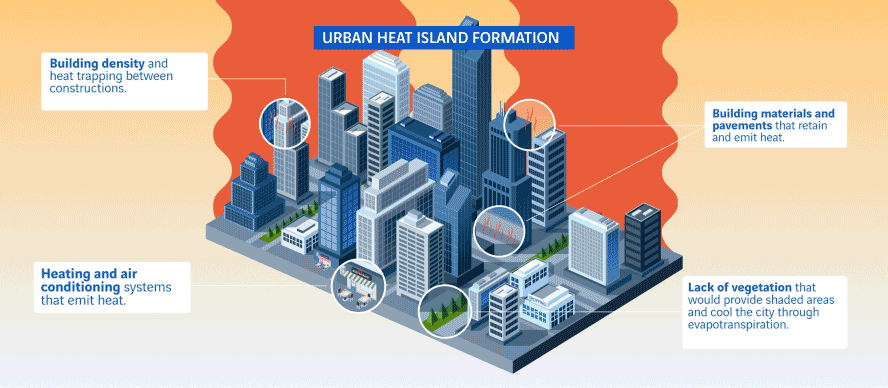
Circular economy
Greening cities is all very well, but it means importing fertile soil from faraway natural environments, farms and forests. An approach that comes straight out of the ecological engineering handbook involves using “technosols”, which refers to soil that has been produced or modified by human activities (earthworks, backfill, wastewater sludge, etc.). In keeping with the principles of the circular economy, this system can help establish short supply chains, where the materials excavated at an urban worksite can be used directly to create nearby green spaces.
A constructed technosols demonstrator in Greater Paris
The determination to embrace the circular economy model and preserve natural resources is one of the key motivations driving VINCI Construction’s experiments at the DLB Valomat material recycling platform in Précy-sur-Marne (Greater Paris). This demonstrator is designed to transform technosol experiments into operational solutions and make them available to the construction and material recycling industries. The demonstrator has enabled the teams to formulate 12 soil compositions by changing different parameters according to the intended use, especially for water management applications.
Ultimately, this trial could potentially be replicated in other regions by setting up demonstrators tailored to the materials and specific features of the local area, or directly at worksites according to their setup, by using the excavated soil in situ and incorporating additional inputs, such as ballast or compost.
Nicolas Hiroux, Technical Engineer in VINCI Construction’s Technical Operations Division.
Sanitation
Constructed wetlands represent an alternative to chemical-based treatment processes. The principle involves treating wastewater with plants that naturally filter out the unwanted elements. The second upside is that these wetlands are a haven for developing and preserving biodiversity.
Decontamination
In a similar vein, phytoremediation is an ecological engineering technique that uses plants’ metabolism to capture and/or break down pollutants in contaminated soil or water.
The VINCI Group considers ecological engineering to be part of an underlying trend, as illustrated by its decision to create the Equo Vivo brand in 2017.
A real market has emerged across Europe and around the world that heralds new opportunities for the VINCI Group’s business lines, combining earthworks with ecological engineering. As earthworks contractors, we are especially sensitive to this issue, since we’re the first ones on site and we have a sense of responsibility. Wherever we’re working, we need to find the gentlest solutions with the lowest environmental impact, such as by working with local stakeholders to identify plant species that are compatible with the project’s technical challenges.
Pascal Insenga, Environment and Sustainable Development Director at VINCI Construction GeoInfrastructure
Sources :
1 Etude Future Data Stats : https://www.futuredatastats.com/environmental-engineering-market#:~:text=Environmental%20Engineering%20Market%3F-,The%20global%20Environmental%20Engineering%20Market%20size%20was%20valued%20at%20USD,of%20the%20Environmental%20Engineering%20Market%3F
2 https://www.genie-ecologique.fr/filiere-du-genie-ecologique/filiere/
4 https://www.inrae.fr/actualites/terrains-degrades-stations-ski-restaurer-biodiversite
Subscribe
Stay tuned : receive our newsletter
Every quarter, discover new articles, exclusive features and experts' views delivered straight to your inbox.
Most viewed
Explore more
Marina Lévy - Companies at the heart of ocean conservation issues
Marina Lévy, oceanographer, research director at the CNRS and ocean advisor to the president of the French National Research…
Bridging the construction gender gap: paving the way to a career in industry for women in Colombia
In 2025, the Ruta 40 consortium led by VINCI Construction Grands Projets completed work on widening and upgrading the Bogotá…
Renewable energy transmission: overcoming the grid challenge for a successful transition
Grids around the world are adapting to new ways of producing and consuming energy, as well as to global warming. When it…

